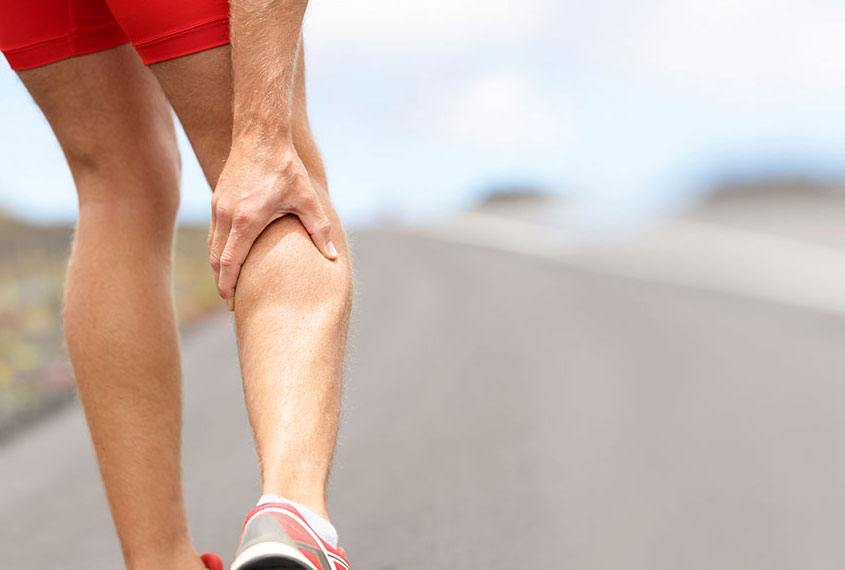Randwick, A Runners Paradise
A quick look around our Randwick neighbourhood and it is easy to see that the locals are mad about running. Intervals and fartlek training at Queens Park, loops of Centennial, or battling the crowds from Coogee to Bondi. This place is a Runner’s Paradise. Although our clinic at Movement Centre may be new,
our physios have plenty of experience in treating calf strains and Achilles problems. They are one of the most common complaints we see. Most of us have felt it or seen it: A small change in direction, a sudden acceleration, a step up onto a gutter. There is a sharp pain, generally in the inside aspect of the calf, and sometimes the runner goes down. The sniper on the roof moment. Time to call a calf strain physio…
Calf Strain: The sniper on the roof
Calf pain from running can result from a wide variety of causes. Most often it is the result of a sharp increase in load that causes a small strain or tear in the calf muscle. This tear is often on the medial (inside) aspect of the gastrocnemius muscle (the big, visible muscle of the calf). This is generally at or near the musculo-tendinous junction (MTJ) – the part where the contractile muscle and tendon tissue connect. As mentioned above, these strains often come from an innocuous but sudden change in load during a run. With the stairs, single tracks, sand, and undulating beachside landscape, it is safe to say that for physio in Randwick calf strain is fairly commonplace.
Acute management for a pulled calf muscle
The strain of the medial calf often prevents any further running and can result in significant limping with walking. It can feel like a sharp stabbing pain, worse when the muscle is stretched. In these early stages it is important to follow the Rest, Ice, Compression, Elevation protocol (R.I.C.E). Early physio intervention is important to ascertain the severity of the strain, determine whether continued walking is advisable, and commence some appropriate exercise. These initial exercises depend on the severity of the strain but will likely involve gentle range of motion stretches and light muscle contraction. Restoring range of motion is important to prevent ongoing issues.
Calf Strain Prognosis and Ongoing management
As strength and stretch tolerance allows, you can gradually load the calf more and more over time. It is important to introduce some graded strengthening with band work or calf raising to encourage good strong new tissue formation and maintain the strength of the surrounding muscles. Increasing the speed and load of this strengthening over time is important to restore the muscle to the loading it requires for running and sports.
- For a grade 1 calf strain where, normal walking is not disturbed by significant pain or limping, light jogging can often commence within 1-2 weeks.
- Grade 2 strains where there is more muscle damage can result in limping for a week or more, and generally take 2-3 weeks before even light jogging can commence. Some high-level grade 2 strains may need crutches or taping to allow walking.
- Grade 3 strains involve a complete tear of a significant portion of the muscle, and generally require a surgical opinion, and at times, surgery. Return to sport for these strains is dependent on a wide variety of factors but can be up to 6 months or more. Each case and each individual is unique, and these prognoses need to be discussed with your physio or doctor.
Red-Herrings with a calf strain
Pain in the calf can also be from other causes, and consultation with your physio or doctor should help you get to the bottom of these. Our physios in Randwick often see patients with lateral calf pain who have been prodded and poked by other physios for months with no change. Lateral calf pain and tenderness can result from a nerve irritation with muscle spasm, and won’t respond to the usual regimen or time frame for calf strains. It is also important to rule out Deep Vein Thrombosis (DVT) as these can present with very similar symptoms to a traditional calf strain.
Our advice as a running physio
Protect from calf strain by
making sure you are aware of your running load. With Garmins and Strava this is not as difficult as it used to be. Do not just keep an eye on weekly Kms (although this is the easiest metric for a quick glance). Consider the intensity, the elevation, the rest days, fatigue, stress, and soreness from strength training. Do not obsess over these but be mindful of them as you progress your training regimen. A simple metric we like to use is:
- Kms or minutes exercise X (perceived effort of exercise /10)
Eg. a 5km run at 6/10 perceived effort scores a 30.
By tracking your cumulative weekly score, you can track your load and your response to the load, and slowly ramp it up from there. We suggest a 10% increase per week as a safe and effective way to improve performance and make a durable return to sport.
Warm-up properly with some gentle stretches, some calf raises and a light jog before hitting race pace. This is even more important if you have been sitting static throughout the day.
Aim to get some regular movement throughout the day, everyday
We also encourage our patients to keep their calves and legs strong and long. Calf raises, single leg hopping, and skipping rope are great activities if you aren’t able to get out and run. Strengthening the rest of the kinetic chain from ankles to hips and trunk can also help prevent future calf strain. Regular gentle stretching and movement through the full range of motion can also help greatly. If you are looking for a
running physio in Randwick to get on top of your calf pain, our physios at Movement Centre are here to help.



